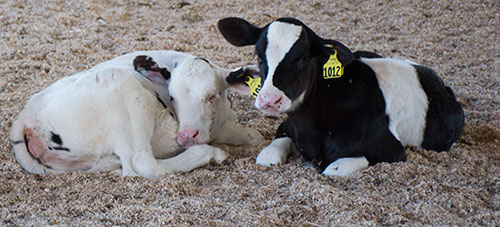
In some livestock species, multiple births are preferred, but that certainly is not the case in dairy cattle.
"Nobody likes to have twins. Twins are an incredible problem," said Paul Fricke, a dairy cattle reproductive specialist with the University of Wisconsin-Madison.
In his presentation during the Purina Leading Dairy Producers Conference last week, Fricke brought up a common misconception that the hormones used in synchronization protocols raise the risk of double ovulation, which results in twinning. He said that synchronization protocols actually lower the number of twins if used correctly.
While a progesterone injection given at the wrong time could lead a cow to double ovulate, a carefully administered double ovsynch protocol, for example, will manipulate a cow to have high progesterone levels at the right time so it doesn't. "Double ovsynch doesn't cause twins; if anything, it might decrease twins," he said.
The real culprit for double ovulation? High milk production.
Fricke explained that high-producing cows eat a lot of feed, which elevates blood flow to the liver and changes circulating estrogen and progesterone levels. He pointed to research that shows a more frequent occurrence of double ovulation in cows milking more than 100 pounds per day.
Therefore, the rising number of multiple births on today's dairy farms is more likely correlated with the continual growth in milk production per cow and not synchronization hormones. "Higher producing cows are at much higher risk for double ovulation and twinning than low-producing cows," Fricke said.
(c) Hoard's Dairyman Intel 2016
January 11, 2016








